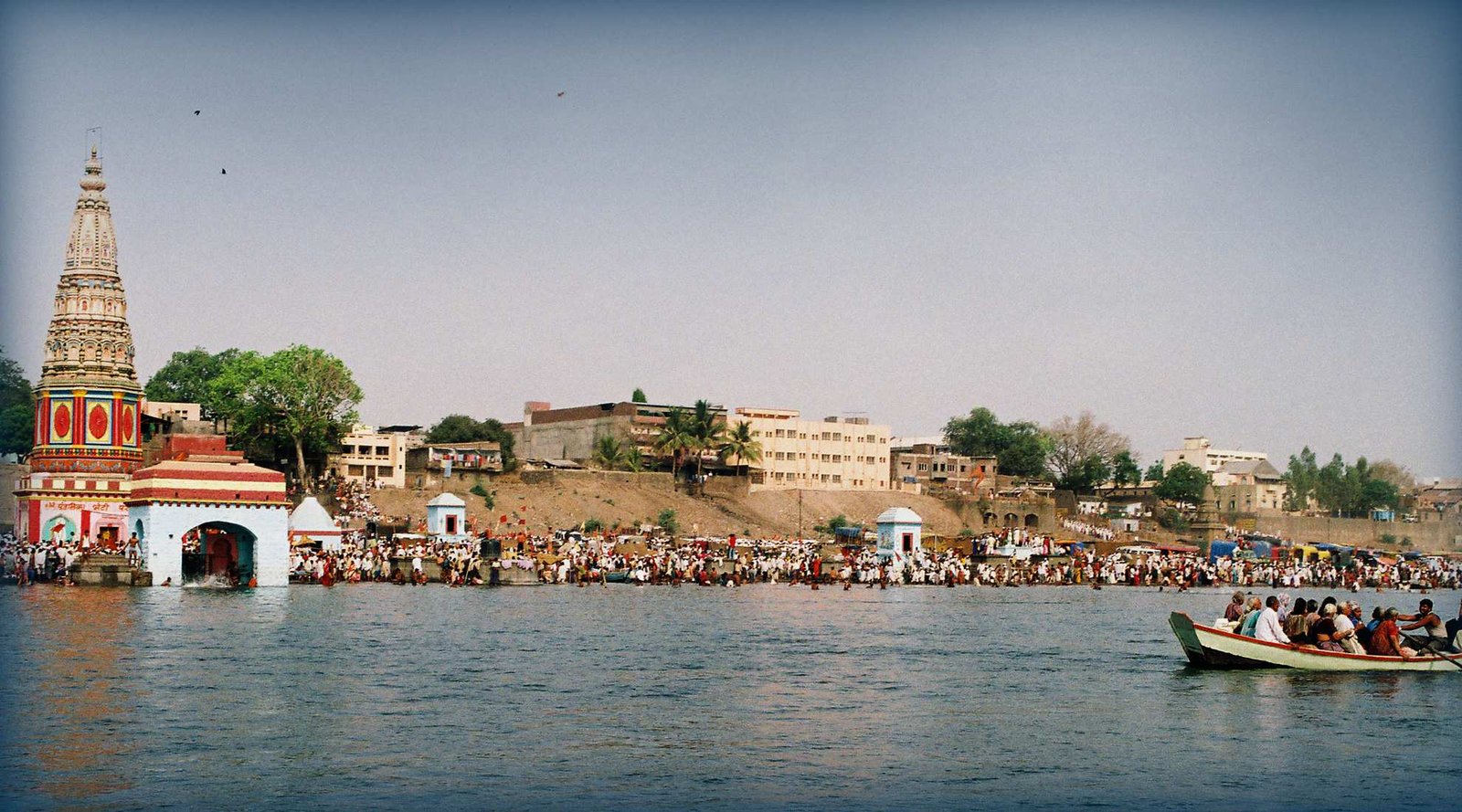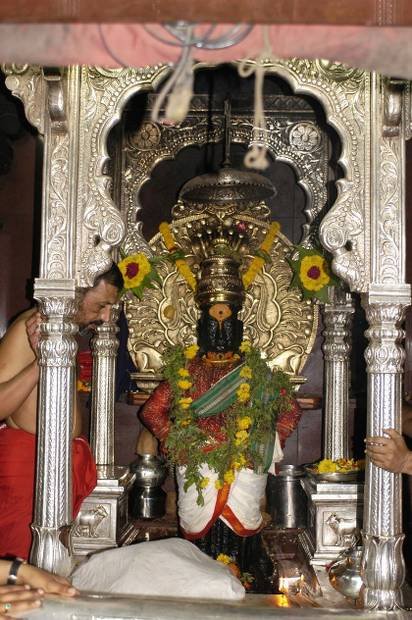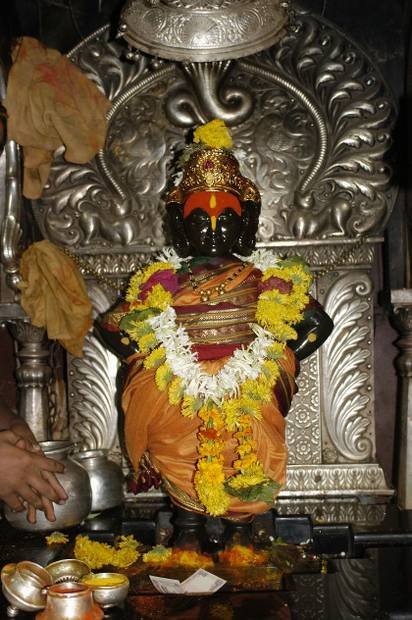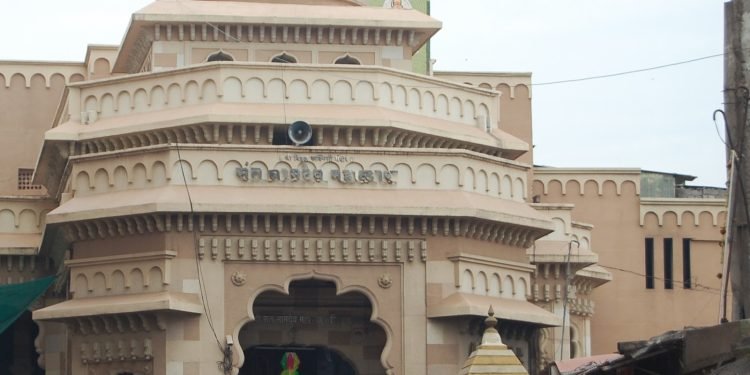One must visit Phandarpur to get a rare chance to touch Lord Vithala or Krishna’s feet. It’s thespiritual capital of Maharashtra due to the atmosphere of reverence created by the Lord of the masses – Vithoba
Shrine’s History
As per historical records, the Pandharpur temple complex has been renovated a number of times. As per these records, one of the royal rulers of the Shaliwahana Dynastry renovated Pandharpur in 83 A.D. The tradition of the paduka procession (walking on bare foot) with palanquins of the idols is said to have begun in 1296 A.D Vithoba’s history begins with consideration of the dating of the chief temple at Pandharpur, which is believed to be the earliest Vithoba temple. The oldest part of the temple dates to the Yadava period of the 12th and 13th centuries. Most of the temple is believed to have been built in the 17th century, though addition to the temple has never ceased. The date the temple was first established is unclear to Bhandarkar, but he insists there is clear evidence to suggest it existed by the 13th century.
According to S. G. Tulpule, the temple stood as early as 1189.[In fact, a monument dated 1189 records establishment of a small Vithoba shrine at the present location of the temple; thus, Tulpule concludes, the worship of Vithoba predates 1189. A stone inscription dated 1237, found on an overhead beam of the present Vithoba temple, mentions that the Hoysala king Someshvara donated a village for the expense of the bhoga for “Vitthala”. An inscription on a copper plate, dated 1249, records the Yadava king Krishna granting to one of his generals the village Paundrikakshetra (kshetra of Pundarik), on the river Bhimarathi, in the presence of the god Vishnu. Another stone inscription in Pandharpur narrates a sacrifice at Pandurangapura due to which “people and Vitthal along with the gods were gratified”. Thus from the 13th century, the city is known as the city of Panduranga.
Inside the temple, a stone inscription records gifts to the temple between 1272?77 from various donors, notably the Yadava king Ramachandra’s minister Hemadri. Ranade believes that an inscription, found in Alandi and referring to Vitthala and Rakhumai, is the oldest related to Vithoba, and dates it to 1209. However, the name Pandaranga is found on a Rashtrakuta copper plate inscription, dated 516. Citing this, Pande infers that Vithoba’s cult was well established by the 6th century

Legends Associated with This Shrine
Vithoba is considered to be a manifestation of Lord Vishnu by the Vishnuvites; a manifestation of Surya by devotees who worship the Sun; a manifestation of Avalokiteshwara by Buddhist devotees; and a manifestation of Neminath by the Jain community followers. The word Vitthala is said to be derived from the Marathi word vittu, meaning brick. As the legend goes, a devotee by the name of Pundalik was engaged in serving his parents when Lord Vishnu visited his home. Pundalik was annoyed at being disturbed, and is said to have picked up a brick and thrown it outside for Lord Vishnu to stand on and wait. Rather than getting angry, Lord Vishnu was happy to see Pundaliks caring and devotion towards his parents. Hence, Lord Vishnu granted Pundalik a boon, on which Pundalik requested the Lord for his eternal presence. It was thus that Lord Vishnu took up permanent residence at Pandharpur. Even today, the idol of Lord Vithoba is always shown as standing on a brick


Shrine’s Map Location and How to Go There
By Road
Well connected to all cities in Maharashtra. Mumbai – Pandharpur, 386 kms. Pune Pandharpur, 204 kms
By Rail
Nearest railhead is Pandharpur on the Kurduwadi – Miraj line of South Central Railway. But a more convenient railhead is Solapur, 74 kms
By Air
Nearest airport is Pune, 204 kms
Shrine Timings
The Pandharpur Vitthal Temple opens at 4 AM and closes at 11 PM. The Mukha Darshan (Darshan of the face) can be had any time without waiting in the queue. The Sparsh Darshan (Touching of the feet) can be had only by standing in a separate queue.
Events Celebrated at This Shrine
Every Wednesday is regarded as an auspicious day and Ekadashi- auspicious day of the month. Pandharpur hosts four Yatras in a year. Out of which Aashadhi Yatra, Kartiki, Magh and Chaitra Ekadashi`s are celebrated yearly and it thus, attracts the most pilgrims to Pandharpur. Out of these, 1st two attract a crowd of about 8 to 10 lakhs. Here, the palanquins (Palkhis) of various saints from different locations come together at Wakhri, 5 kilometers away from Pandharpur. And then, the pilgrims take holy bath in river Bhima and usually stand in queues 3km long in order to take Darshana of Lord Vitthala.Apart from these, the temple premise also celebrates Gudhi Padawa, Ram-Navami, Dasehara and Deepavali festivals
Extra Information About this Shrine
Occasional vistor from other places will find it difficult to understand the huge rush associated with regular visits by local Varkaris – devotees of Vitthala who gather from all over Maharashtra, walking all the way from their homes to Pandharpur. However following some precautions one can have good darshan of Vithobha. Leave Mobile phones, cameras and handbags in your car or lodge. The priests will ask for huge sums upto Rs. 10000, if you wish to avoid the queue and take a quick darshan. In fact, most of the priests are simply out to make money. You literally have to bribe them to get decent darshan and they also insist on taking money for giving you coconuts and prasad. It is also very difficult to get any Special VIP darshan pass without bribing. Ignore so-called helpful people who will tell you where to get darshan passes, where to park, which places to visit in town, etc. They are just touts out to make money. Regular darshan can take anytime from 2 to 10 hours depending on the rush. Its better to avoid wednesdays, Ekadasis and usual piligrimage months of ashada and Karthika
For those short of time, there is Mukh Darshan where you can have the darshan of Lord Vithoba from a distance of 20 feet. Mukh Darshan means no touching of the idol. Due to huge influx of piligrims its a mommoth task to maintain hygeine in this place













































